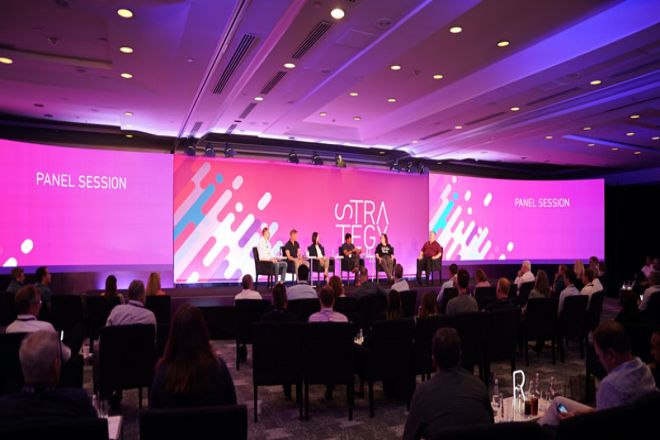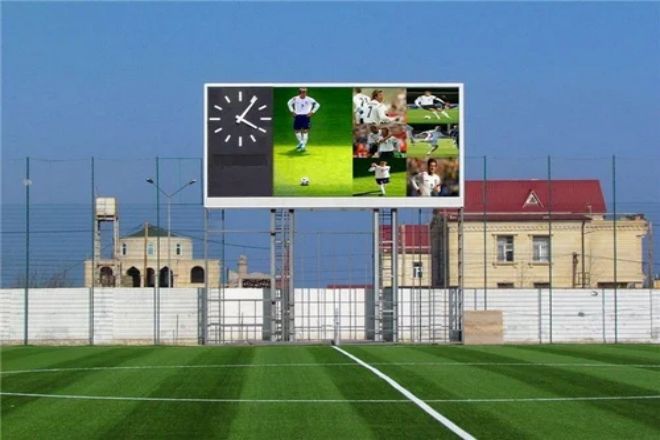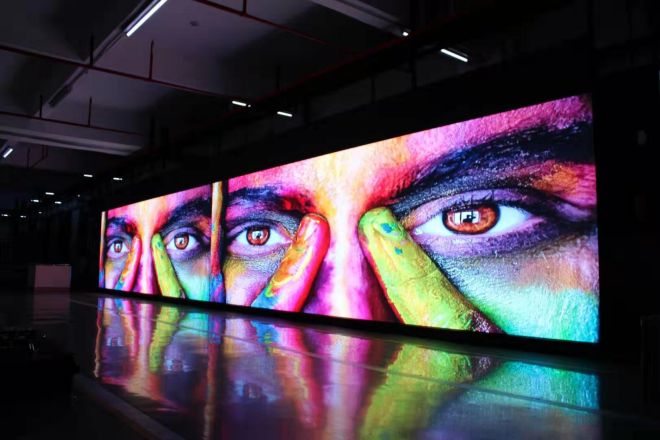مقدمة

باعتبارها وسيلة هامة لنشر المعلومات الحديثة، شاشات عرض LED يتم استخدامها على نطاق واسع في مناسبات مختلفة، مثل الإعلانات التجارية، والأحداث الرياضية، وإصدارات المعلومات العامة، وما إلى ذلك.
لا تقتصر شاشات عرض LED المُخصصة على تلبية احتياجات المناسبات الخاصة فحسب، بل تُعزز أيضًا صورة العلامة التجارية والتجربة البصرية. ستُقدم هذه المقالة خطوات تخصيص شاشات عرض LED بالتفصيل لمساعدتك على فهم هذه العملية وتخطيطها بشكل أفضل.
1. لماذا تحتاج شاشات العرض LED إلى التخصيص؟
يعود سبب الحاجة إلى تخصيص شاشات عرض LED بشكل رئيسي إلى تنوع تطبيقاتها وخصوصية احتياجات المستخدمين. وفيما يلي بعض الأسباب الرئيسية:
- الحجم والشكل المحدد:
تختلف متطلبات حجم وشكل شاشات عرض LED باختلاف سيناريوهات التطبيق. على سبيل المثال، في ظل قيود المساحة المحددة، أو لتحقيق تأثيرات بصرية محددة (مثل الشاشات المنحنية، والكروية، والمجسمة، إلخ)، تُلبي شاشات عرض LED المُخصصة هذه الاحتياجات بشكل أفضل.
- متطلبات الأداء المحددة:
قد تتطلب بيئات التطبيق المختلفة أداء عرض مختلفًا. على سبيل المثال، قد تتطلب شاشات العرض الخارجية سطوعًا أعلى وأداءً مقاومًا للماء، بينما قد تتطلب شاشات العرض الداخلية دقة ودقة ألوان أعلى. توفر شاشات عرض LED المُخصصة الأداء الأمثل وفقًا للاحتياجات المحددة.
- المتطلبات الوظيفية المحددة:
على سبيل المثال، قد تتطلب شاشة العرض LED الخاصة بمحطة تلفزيونية نظام تحكم محددًا لتلبية احتياجات تحديثات المحتوى في الوقت الفعلي والتنسيق مع المعدات الأخرى.
2. ما هي فوائد شاشات العرض LED المخصصة؟

- تلبية الاحتياجات المحددة:
يمكن لشاشات العرض LED المخصصة تلبية احتياجات المستخدمين المحددة بدقة من حيث الحجم والشكل والأداء والوظيفة، مما يضمن أفضل تأثير في سيناريوهات التطبيق المحددة.
- موثوقية عالية وعمر طويل:
تتميز شاشات عرض LED بثبات وموثوقية ممتازين، ويمكنها العمل في مختلف البيئات القاسية، ويصل عمرها الافتراضي عادةً إلى عشرات الآلاف من الساعات. وتتميز شاشات عرض LED المُخصصة عادةً بتطورها في اختيار المواد ودقة التصنيع، مما يزيد من موثوقيتها وعمرها الافتراضي.
- توفير الطاقة وحماية البيئة:
تستخدم شاشات عرض LED أجهزة أشباه الموصلات كمصدر للضوء، مما يجعلها أكثر كفاءة في استخدام الطاقة من مصادر الضوء التقليدية. ويمكن لشاشات عرض LED المُخصصة تحسين تصميم مصدر الضوء وفقًا للاحتياجات المحددة، مما يقلل استهلاك الطاقة وانبعاثات المواد الضارة بشكل أكبر.
- سطوع عالي وألوان زاهية:
تتميز شاشات عرض LED بسطوعٍ وتعبيرٍ لونيٍّ ممتازين، وتوفر رؤيةً ممتازةً في مختلف البيئات. يمكن لشاشات عرض LED المُخصصة ضبط معلمات السطوع واللون وفقًا للاحتياجات المُحددة لضمان أفضل تأثيرٍ بصري.
- وصول إعلاني مرتفع:
تتميز شاشات عرض LED الخارجية المُخصصة بمساحاتها الواسعة وأنواعها المتنوعة، ويمكنها تغيير مظهرها بطرق متنوعة لتعزيز جاذبيتها. هذا يجعل محتوى الإعلانات على شاشات عرض LED المُخصصة أكثر وضوحًا، ويجذب المزيد من المارة للمشاهدة، مما يزيد من وصول الإعلانات.
- تأثير بصري قوي:
يمكن تخصيص شاشات العرض LED المخصصة وفقًا لمتطلبات المعلنين لعرض الشاشة، مثل اختيار حجم أكبر لخلق تأثير بصري أقوى.
- القدرة على التكيف والمرونة:
تتميز شاشات عرض LED بتصميمها المعياري، مما يجعلها مرنة وقابلة للتكيف. يمكن لشاشات عرض LED المُخصصة اختيار الأحجام والدقة المناسبة وفقًا لاحتياجات المستخدم، وتعديل التصميمات والأشكال في أي وقت.
- لا تعب بصري:
تعمل خصائص عدم الوميض لشاشات العرض LED على تقليل حدوث التعب البصري بشكل فعال، وهو أمر مهم بشكل خاص للأعمال والأنشطة التي تتطلب مشاهدة شاشة العرض لفترة طويلة.
- مقاوم للماء والشمس:
شاشات العرض LED المخصصة مقاومة للماء والرطوبة والرياح والغبار، وهي مناسبة لمختلف البيئات الداخلية والخارجية.
3. خطوات تخصيص شاشات العرض LED
- توضيح المتطلبات والميزانيات
وصف سيناريوهات التطبيق والحجم والدقة والسطوع واللون والمتطلبات المحددة الأخرى بالتفصيل.
حدد نطاقًا معقولًا للميزانية وفقًا للمتطلبات، مما سيساعد في اتخاذ خيارات فعالة في الخطوات اللاحقة.
- اختر النوع المناسب من شاشة العرض LED
اختر النوع المناسب من شاشة العرض LED وفقًا لسيناريو التطبيق (مثل داخلي، خارجي، إيجار، تركيب ثابت، إلخ).
خذ في الاعتبار عوامل مثل تأثير العرض، والاستقرار، ومتانة شاشة العرض لضمان تلبية احتياجات الاستخدام على المدى الطويل.
- اختيار الموردين والمنتجات
قم بمقارنة جودة المنتج والسعر وخدمة ما بعد البيع والجوانب الأخرى للموردين المختلفين، واختر موردًا حسن السمعة.
قم باختيار منتجات شاشات LED المناسبة وفقًا للاحتياجات، بما في ذلك المكونات الرئيسية مثل الوحدات، وموفرات الطاقة، وأنظمة التحكم.
- تصميم هيكل العرض وخطة التثبيت
تصميم هيكل عرض معقول وخطة تثبيت بناءً على سيناريو التطبيق وحجم العرض.
يجب مراعاة عوامل مثل قدرة الشاشة على تحمل الحمل، وتبديد الحرارة، ومقاومة الماء، وذلك لضمان قدرة الشاشة على العمل بثبات في بيئة معقدة.
- توقيع العقد ودفع المبلغ
توقيع عقد رسمي مع المورد لتوضيح الشروط الرئيسية مثل مواصفات المنتج والأسعار وتواريخ التسليم.
قم بدفع المبلغ كما هو متفق عليه في العقد لضمان معاملة سلسة.
- الإنتاج والتسليم
يقوم المورد بالإنتاج وفقًا لمتطلبات العقد لضمان جودة المنتج وتاريخ التسليم.
إجراء فحص الجودة قبل التسليم للتأكد من أن المنتج يلبي متطلبات العقد.
- التثبيت وتصحيح الأخطاء
قم بتثبيت الشاشة وفقًا لخطة التثبيت للتأكد من أن عملية التثبيت آمنة وموحدة.
تصحيح أخطاء العرض، بما في ذلك التعديلات في السطوع واللون والدقة وما إلى ذلك، لضمان تأثير العرض واستقراره.
- القبول والتدريب
قبول العرض للتأكد من أنه يلبي متطلبات العقد والاحتياجات الفعلية.
توفير التدريب والتوجيه للمستخدمين لضمان قدرتهم على تشغيل وصيانة الشاشة بكفاءة وإعطاء اللعب الكامل لوظائفها وقيمتها.
4. احتياطات تخصيص شاشات العرض LED

عند تخصيص شاشات العرض LED، ولضمان التقدم السلس للمشروع وجودة المنتج النهائي، هناك العديد من الاعتبارات الرئيسية التي تحتاج إلى اهتمام خاص:
- دراسة كاملة لسيناريو التطبيق والميزانية
تتمثل المهمة الأولى لتخصيص شاشات العرض LED في توضيح سيناريوهات تطبيقها، بما في ذلك موقع الاستخدام (داخلي أو خارجي)، ومتطلبات الحجم، ومتطلبات الدقة، ومتطلبات السطوع، وما إلى ذلك. وهذا يؤثر بشكل مباشر على تكوين المنتج وتكلفته.
ينبغي تحديد الميزانية بناءً على الاحتياجات الفعلية والظروف المالية لتجنب السعي العشوائي وراء التكوينات عالية الجودة التي قد تتجاوز تكاليفها الميزانية. وفي الوقت نفسه، ينبغي مراعاة تكاليف التوسع والصيانة المستقبلية المحتملة.
- اختر المورد ذو القوة والمصداقية
ترتبط قوة ومصداقية المورد ارتباطًا مباشرًا بجودة شاشات العرض LED المُخصصة وخدمة ما بعد البيع. عند اختيار مورد، يجب أن تفهم تمامًا قدرته الإنتاجية، ومستواه التقني، وسمعته السوقية، وغيرها من الجوانب.
يمكن تقييم القوة الشاملة ومصداقية المورد من خلال استشارة المواد ذات الصلة والزيارات الميدانية واستشارة خبراء الصناعة وما إلى ذلك.
- اقرأ شروط العقد بعناية قبل التوقيع على العقد
يُعدّ العقد الأساس القانوني لمشروع شاشات العرض LED المُخصّصة، لذا يجب قراءة شروط العقد بعناية قبل توقيعه. ركّز على مواصفات المنتج، والأسعار، ومواعيد التسليم، وطرق الدفع، ومعايير الجودة، وخدمة ما بعد البيع، وغيرها من الجوانب.
في حال وجود أي استفسارات أو غموض، يُرجى التواصل مع المورّد في الوقت المناسب وتوضيحه. يُرجى التأكد من وضوح شروط العقد ودقتها وإمكانية تطبيقها.
- انتبه لأمور السلامة أثناء التركيب والتشغيل
يُعد تركيب وتشغيل شاشات العرض LED عملية معقدة تشمل مجالات متعددة، مثل الكهربائية والميكانيكية. يجب الالتزام الصارم بلوائح السلامة وإجراءات التشغيل ذات الصلة أثناء عملية التركيب والتشغيل.
تأكد من تطبيق إجراءات السلامة في موقع التركيب لتجنب حوادث مثل الصدمات الكهربائية والسقوط. وفي الوقت نفسه، ينبغي توفير التدريب والتوجيه المهني لموظفي التشغيل لضمان امتلاكهم المهارات اللازمة ووعيهم بسلامة المعدات.
بالإضافة إلى الاحتياطات الأربعة المذكورة أعلاه، هناك بعض التفاصيل الأخرى التي تحتاج إلى الاهتمام، مثل تغليف المنتج والنقل، ومعايير القبول والطرق، ومحتوى خدمة ما بعد البيع والفترة، وما إلى ذلك. فقط من خلال النظر في هذه الجوانب بشكل شامل يمكننا ضمان التقدم السلس لمشروع شاشة العرض LED المخصصة وجودة المنتج النهائي.
خاتمة
يُعد تخصيص شاشات عرض LED عمليةً معقدةً وهامةً تتطلب دراسةً شاملةً لعوامل متعددة. من خلال توضيح الاحتياجات، واختيار الموردين والمنتجات المناسبة، ووضع خطط تركيب معقولة، يُمكن ضمان تلبية شاشة عرض LED المُخصصة لمتطلبات سيناريوهات الاستخدام، وتعزيز صورة العلامة التجارية والتجربة البصرية.
آمل أن تساعدك المقدمة في هذه المقالة على فهم عملية تخصيص شاشات العرض LED والتخطيط لها بشكل أفضل.
أخيرًا، إذا كنت تريد معرفة المزيد عن شاشات LED، يرجى الحصول على اتصال معنا.
